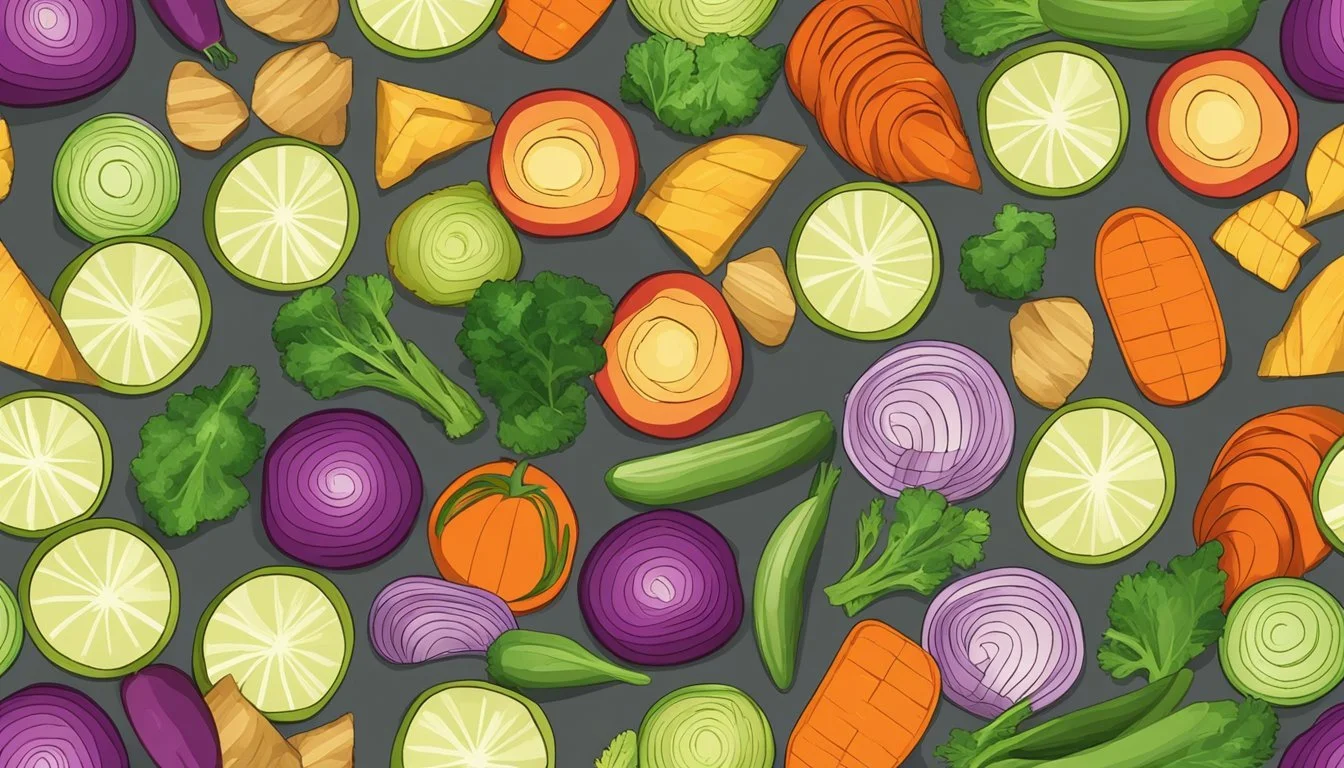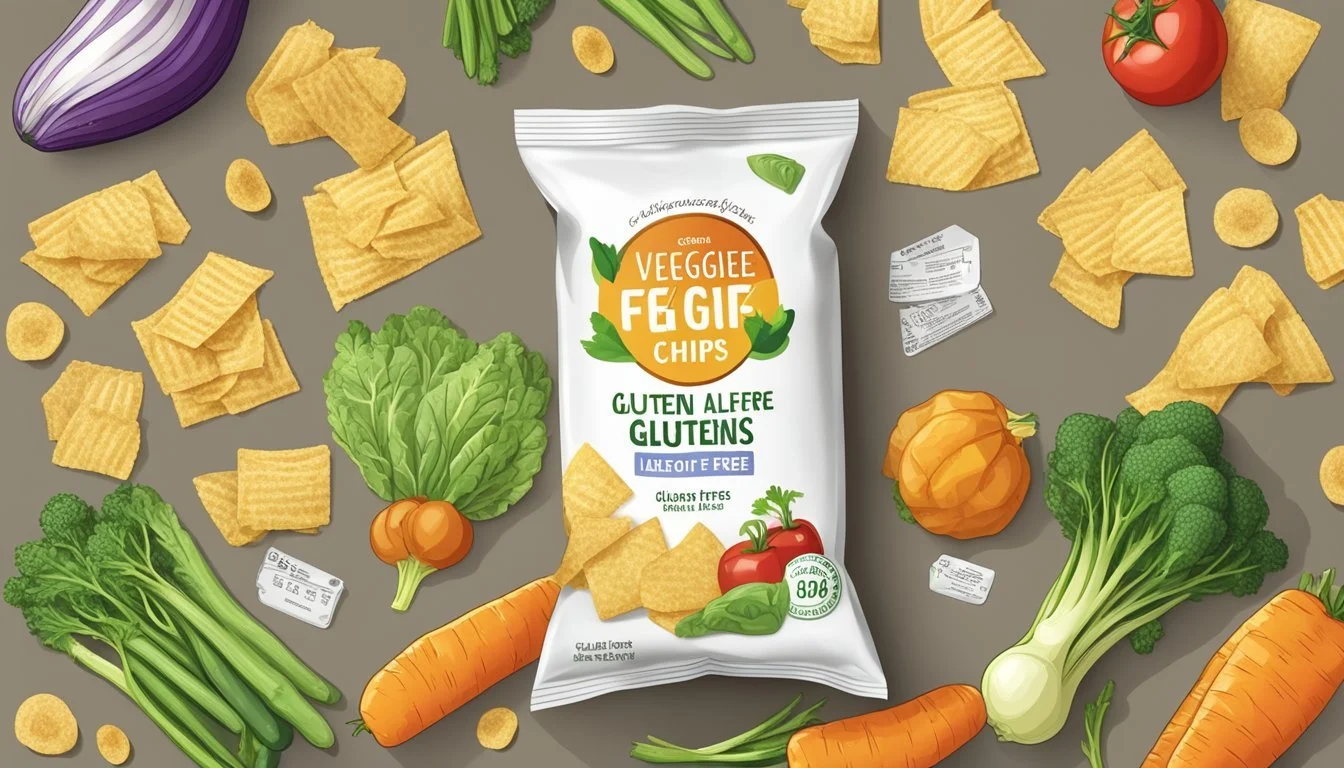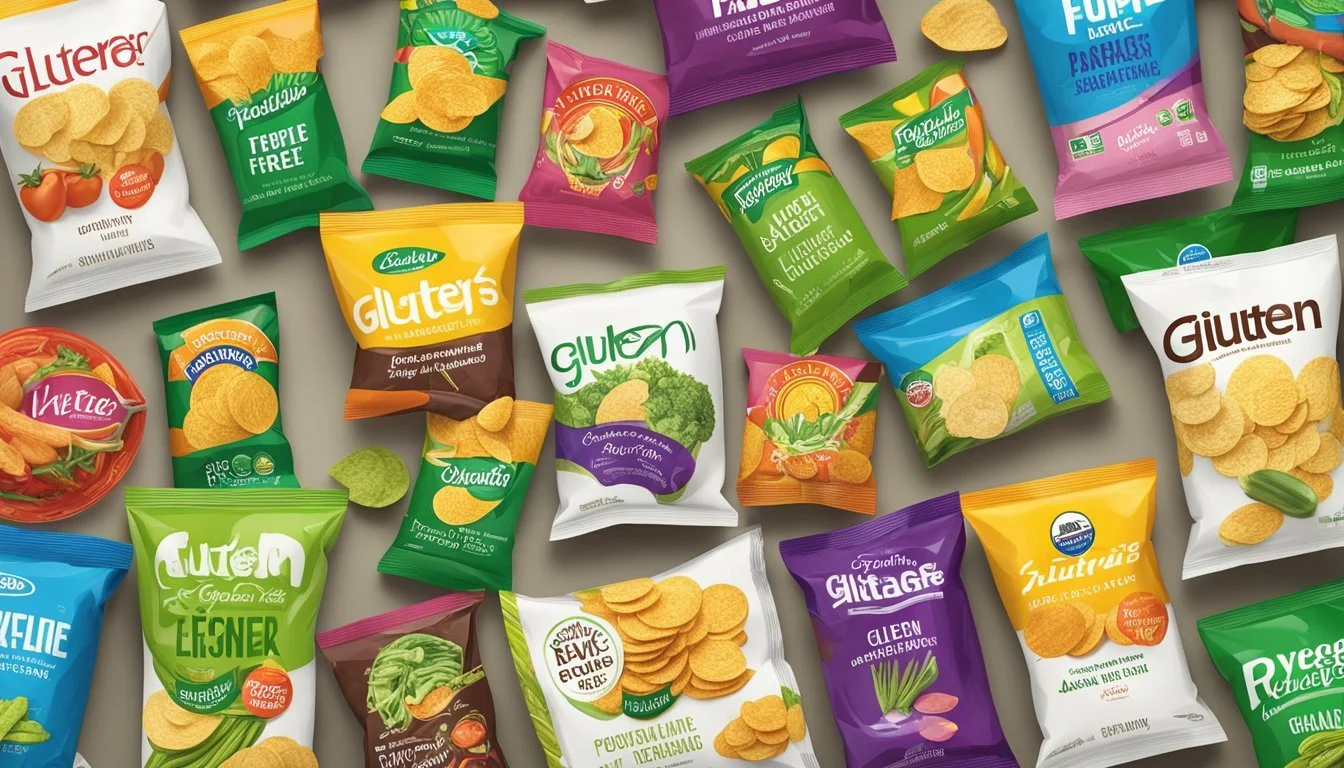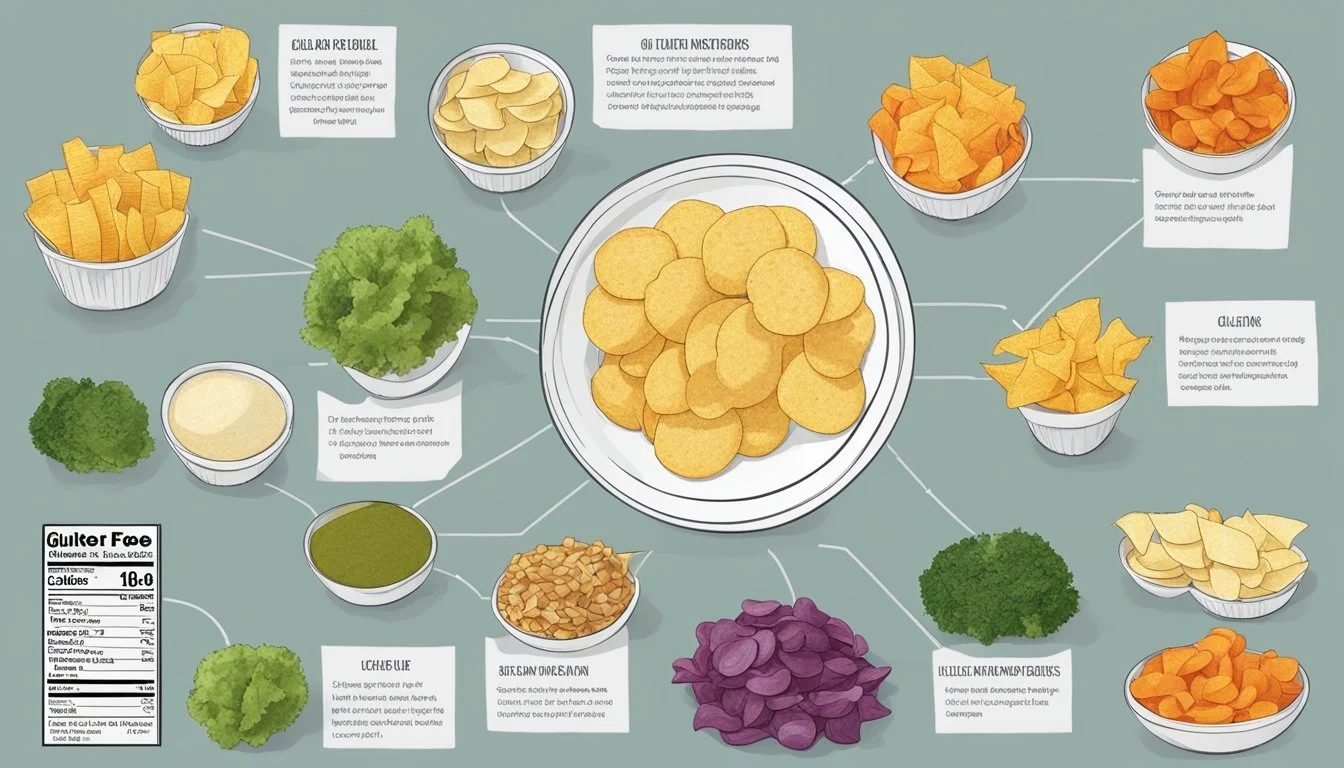Are Veggie Chips Gluten-Free?
Understanding Snack Options for Celiacs
Veggie chips are often considered a healthier alternative to traditional potato chips and are popular among those looking for gluten-free snack options. Gluten is a group of proteins found in grains like wheat, barley, and rye, which can cause health issues for individuals with celiac disease or gluten sensitivity. Veggie chips are typically made from various vegetables that are sliced thin and then baked or fried to create a crispy texture.
While many veggie chips are inherently gluten-free due to their primary ingredients being vegetables, cross-contamination during processing is a concern for those strictly avoiding gluten. It's essential to check for labels that certify the product as gluten-free, indicating that the chips have been produced in a dedicated gluten-free facility or have undergone testing to confirm the absence of gluten. This extra step ensures that the veggie chips are safe for individuals with celiac disease or a gluten intolerance.
Brands and manufacturers have responded to the growing demand for gluten-free snacks by offering a range of gluten-free veggie chips. The market now includes a variety of options, from purely vegetable-based chips to those that may include additional flavorings or seasonings. Consumers are advised to read ingredient lists carefully, as some additives or flavorings might contain gluten. The availability of certified gluten-free products makes it easier for consumers to enjoy veggie chips without the worry of gluten exposure.
What Are Veggie Chips?
Veggie chips are a popular snack offering a crispy alternative to traditional potato chips, often perceived as being made from a healthier base of various vegetables.
Definition and Varieties
Veggie chips are snack items made from a diverse range of vegetables that have been sliced, dehydrated, or fried. They typically mimic the crunch and convenience of traditional chips but are made using vegetables such as carrots, sweet potatoes, beets, parsnips, zucchini, and yucca. Moreover, beans and peas are also used as base ingredients for these snacks. Varieties of veggie chips are abundant, incorporating both root and non-root vegetables that cater to different dietary preferences.
Popular Brands and Types
Among the numerous brands available, Terra and Kettle Brand are two well-recognized names that consumers often gravitate towards for their veggie chip selections. These brands offer an array of types, including:
Terra Chips: Known for their exotic vegetable chip blends, using vegetables such as taro, kabocha squash, and parsnip.
Kettle Brand: Provides crinkle-cut chips with a focus on vegetables like sweet potatoes and the variety "Tropical Sweets" which features sweet potatoes and yuca.
Both brands emphasize the use of real vegetables and have options that satisfy gluten-free dietary requirements.
Health Considerations of Veggie Chips
Veggie chips are often marketed as a healthier alternative to traditional potato chips, but it is essential to consider their nutritional content, calorie comparison with potato chips, and potential health benefits to assess their actual health value.
Nutritional Content
Veggie chips boast a diverse range of nutrients depending on the vegetables used. They can provide vitamin A, potassium, and B vitamins, but their nutritional profile may vary. A typical serving of veggie chips might contain:
Calories: Approximately 150
Fat: 9g (Saturated fat: 1g)
Sodium: Around 150-170mg
Carbohydrates: 16g (Fiber: 2g, Sugar: 3g)
Protein: 1g
Calorie Comparison with Potato Chips
When compared to classic potato chips, veggie chips can have a similar caloric content. For instance:
Chips Type Calories Fat Sodium Protein Veggie Chips 150 9g 170mg 1g Classic Potato Chips 160 10g 170mg 2g
Potential Health Benefits
While veggie chips can provide some nutrients like potassium and fiber that are important for a balanced diet, one must also account for their sodium and fat content. High sodium intake is linked to health issues such as hypertension. Nevertheless, the presence of vegetables might offer some micronutrients that are beneficial, such as iron, calcium, and potassium, contributing to the daily value of these nutrients.
Gluten-Free Aspects of Veggie Chips
When examining the gluten-free nature of veggie chips, it is essential to scrutinize the ingredients, certification, and labeling practices. This ensures the suitability of veggie chips for individuals with celiac disease or those following a gluten-free diet.
Identifying Gluten-Free Options
Veggie chips can be inherently gluten-free if they are made from vegetables that do not come into contact with gluten during processing. Gluten is a protein found in grains such as wheat, barley, rye, and certain varieties of oats. Individuals must carefully inspect the ingredients list for the absence of these grains. Cross-contamination is another critical factor, where gluten-free products must be manufactured in a facility that prevents contamination with gluten-containing foods.
Certification and Labeling
Labels play a pivotal role in guiding consumers to gluten-free products. The term "certified gluten-free" on packaging signifies that the product has undergone rigorous testing to meet the standards set by a gluten-free certification organization. This certification is especially important for those with celiac disease, as even trace amounts of gluten pose a health risk. Additionally, products labeled as gluten free without certification may still align with gluten-free guidelines, but have not been formally validated by a third-party organization.
Understanding Gluten-Free Certification Organizations
Several organizations offer gluten-free certification. They audit manufacturers to ensure strict adherence to gluten-free standards, which typically include testing products to contain less than 20 parts per million of gluten. Prominent certification bodies include:
The Gluten-Free Certification Organization (GFCO)
The Coeliac Society in various countries
The Gluten-Free Certification Program (GFCP)
Each organization has its own set of standards and testing protocols, but they all aim to protect consumers by verifying that products meet defined gluten-free criteria. It is advised that consumers familiarize themselves with the symbols and processes of these organizations to make informed choices.
By emphasizing the importance of understanding gluten-free aspects regarding veggie chips, this section intends to provide individuals with necessary knowledge to maintain a gluten-free diet confidently.
Culinary Attributes of Veggie Chips
Veggie chips are known for their diverse flavors and unique textures. They cater to those seeking gluten-free snacking options without compromising on taste and crunchiness.
Flavors and Seasonings
Veggie chips often boast a variety of flavors, featuring both vegetables' natural tastes and added seasonings. Common flavorings include sea salt, which enhances the natural taste profile of the underlying vegetables. Additionally, manufacturers may incorporate spices and herbs to create a complex taste experience. Some veggie chips integrate the tangy essence of tomatoes or the subtle sweetness of spinach, providing a flavorful alternative to traditional potato chips.
Sea Salt: A common choice for a simple yet savory taste.
Herbs & Spices: These can range from garlic to rosemary, creating a wide spectrum of flavors.
Texture and Crunchiness
When it comes to texture, veggie chips aim to achieve a satisfying crunch akin to conventional chips. The crunchiness varies by brand and preparation method but typically falls within a range that consumers expect from a crispy snack. The choice of oil, such as avocado oil, sunflower oil, or safflower oil, used in the cooking process can influence both the texture of the chips and their health attributes. These oils are selected for their ability to withstand high temperatures required for crisping the chips.
Oil Types:
Avocado Oil: High in monounsaturated fats, making it a desirable choice for health-conscious consumers.
Sunflower and Safflower Oil: These oils are traditionally used in the industry due to their neutral flavor and high smoke points.
Dietary Considerations and Alternatives
When exploring the landscape of veggie chips, particularly in the context of whether they are gluten-free, it is critical to assess their suitability for various diets and explore alternatives, such as homemade recipes and non-gluten grain substitutions.
Suitability for Vegan and Paleo Diets
Vegan Diet: Veggie chips can be an excellent snack for vegans, as they typically do not contain animal products. However, it's crucial to review the ingredients list for non-vegan additives.
Paleo Diet: For those on a paleo diet, which avoids grains and processed foods, veggie chips may not always be compatible. Many commercial veggie chips are made with corn or potato bases, which are not paleo-friendly. To comply with a paleo diet, individuals should seek out veggie chips crafted from non-grain sources, such as coconut flour or various seeds.
Homemade Veggie Chips Recipes
Creating veggie chips at home allows for full control over the ingredients, ensuring they are gluten-free and align with dietary preferences. Here are two simple recipes:
Kale Chips:
Toss kale leaves with olive oil and season.
Bake until crisp.
Chickpea Flour-based Chips:
Mix chickpea flour with water to form a batter.
Season to taste and bake thin spreads until crunchy.
Non-Gluten Grain Alternatives
For those requiring gluten-free options, grains such as quinoa, rice, and tapioca offer alternatives. If reintroducing a crunch into snacks or meals while adhering to a gluten-free lifestyle, consider these options:
Quinoa Chips: Made from the high-protein grain, offering a nutritious crunch.
Rice-based Chips: Utilize rice flour for a light texture.
Adopting these substitutions can diversify the gluten-free choices available while adding new flavors and textures to the diet.
Food Safety and Allergy Information
When selecting veggie chips, consumers need to be vigilant about the potential for allergens and the risk of cross-contamination. It's essential to understand food labels to ensure the safety of those with allergies.
Managing Allergens and Cross-Contamination
Cross-contamination can occur at various stages of production, from harvesting to processing. Veggie chip manufacturers may use the same facilities or equipment to produce gluten-containing products, which can result in gluten traces in chips labeled as gluten-free. To mitigate this risk, consumers should look for certifications such as:
Certified Gluten-Free: Indicates stringent testing and a guarantee that the product contains less than 20 mg/kg of gluten, which is a safe threshold for most people with celiac disease.
Kosher Certification: Often, but not always, indicates a separate production line or equipment used for Kosher products, which could minimize cross-contact with gluten.
Non-GMO Project Verified: While this doesn't link directly to allergen-free or gluten-free products, it does reflect transparency in production practices.
Facilities often implement procedures compliant with FDA regulations to prevent allergen cross-contact. These procedures include thorough cleaning of equipment and dedicating production lines to gluten-free products.
Understanding Food Labels for Allergies
The FDA mandates clear labeling of eight major allergens, including wheat, which is a primary concern for those avoiding gluten. However, gluten can also come from barley and rye, not just wheat. Consumers should look for labels stating:
"Gluten-Free": Assures that the product has undergone testing and does not contain more than 20 ppm of gluten.
Ingredient List: Offers a thorough check for any gluten-containing ingredients or additives.
Allergen Statements: Typically located below the ingredient list, this section can alert consumers to potential cross-contamination with allergens.
It's crucial for individuals with allergies to read labels carefully and opt for products with clear allergen-free certifications to ensure their safety.
Environmental and Ethical Considerations
When selecting veggie chips, consumers often weigh the environmental and ethical consequences associated with their production. These concerns typically involve the ingredients used, as well as the manufacturing processes.
Organic and Non-GMO Veggie Chips
Organic veggie chips are produced without synthetic pesticides or fertilizers, thus reducing their environmental impact. Consumers opting for products with an Organic certification can be assured that the ingredients come from a system of farming that aims to work with ecosystems rather than against them. Furthermore, Non-GMO Project Verified veggie chips assure customers that the vegetable ingredients have not been genetically modified, adhering to another layer of environmental and ethical considerations. These certifications help guide consumers in making choices that align with their values.
Production Practices and Sustainability
The production of veggie chips involves several steps which, if not managed sustainably, can have a significant carbon footprint. Energy consumption and the ecological implications of growing and harvesting vegetables play critical roles in determining the overall impact of veggie chip products on the environment. When veggie chips are produced with a focus on sustainability, manufacturers take into account:
Efficient use of energy and resources,
Responsible waste management,
Fair labor practices.
Sustainable production practices ensure that the environmental cost of veggie chips is kept to a minimum. Brands that highlight their efforts in sustainability often inform consumers through labeling or detailed information on their packaging.
Shopping and Storage Tips
When searching for veggie chips, buyers should focus on their storage needs and shopping venues to ensure the snacks stay crisp and fresh.
Where to Buy
Consumers can purchase gluten-free veggie chips at a variety of locations, ranging from health food stores, supermarkets, and online retailers. One must look for gluten-free certifications or labels, especially if buying from brands that also produce gluten-containing products. Health-conscious stores often provide a wider array of choices, catering to customers with specific dietary needs.
Best Practices for Freshness and Longevity
Once veggie chips are bought, proper storage practices are key to maintaining freshness and longevity. Here are some tips:
Seal the Package: If the chips come in a resealable bag, ensure it's tightly closed after each use. If not, transfer the chips to an airtight container.
Avoid Humidity and Light: Store the veggie chips in a cool, dry place away from direct sunlight to prevent them from becoming stale or losing their crispness.
Check Preservatives and Colors: Some veggie chips contain preservatives to extend shelf life, which can impact storage options and duration. Natural colors are less likely to fade over time compared to artificial ones, preserving the product's visual appeal.
By paying attention to these details, consumers can enjoy their gluten-free veggie chips at the peak of their texture and flavor.
Popular Veggie Chip Brands to Consider
When exploring gluten-free veggie chips, consumers frequently encounter brands like Terra and Kettle Brand, known for their variety and commitment to gluten-free options. The comparison of these top brands and their unique offerings reveals a diverse range of ingredients and flavors catering to different dietary needs and taste preferences.
Comparison of Top Brands
Terra:
Ingredients: A diverse range of root vegetables such as sweet potato, taro, and parsnip.
Flavors: Original, Mediterranean Herbs, and Sweet Potato.
Certifications: Gluten-free certified, Non-GMO Project Verified.
Kettle Brand:
Ingredients: Potatoes, safflower oil, sunflower oil, and sea salt.
Flavors: Sea Salt, Salt & Fresh Ground Pepper, and Backyard Barbeque among others.
Certifications: Many options are gluten-free certified; check packaging for specific items.
Unique Offerings and Ingredients
These brands distinguish themselves with their unique offerings:
Terra presents an exotic array of vegetable chips, not just the typical potato, allowing for a richer nutrient profile, including vitamins like vitamin A, depending on the vegetable used.
Kettle Brand not only offers traditional potato chips but also innovates with new flavors and cleaner ingredient profiles that focus on simplicity and natural taste.
It's important for consumers to always verify certifications and read ingredient lists as formulations may change. While brands like Doritos and Ruffles offer some gluten-free items, their product lines are not exclusively gluten-free, and cross-contamination could be a risk for those with celiac disease or extreme gluten sensitivities.
Understanding the Regulatory Landscape
The regulatory framework governing gluten-free labeling is crucial for manufacturers and consumers alike, ensuring transparency and safety in food choices.
Gluten-Free Labeling Standards
The standards for labeling products as gluten-free are set to protect individuals with celiac disease or gluten intolerance. Gluten-Free Certification Organization (GFCO) is one of the leading entities that provide certification to products meeting stringent criteria. For a product to boast a gluten-free label, it must contain less than 20 parts per million (ppm) of gluten. This benchmark aligns with international standards and provides a uniform threshold for safety.
Certification involves rigorous testing of ingredients, production facilities, and finished products. Manufacturers frequently display distinctive certification symbols on their packaging to quickly inform consumers. These symbols are a visual representation of adherence to established gluten-free guidelines.
Food and Drug Administration Guidelines
The Food and Drug Administration (FDA) governs the labeling of packaged foods and stipulates that the term "gluten-free" must meet specific requirements. Key elements of FDA guidelines for a product labeled as gluten-free include:
It must not contain an ingredient that is any type of wheat, rye, barley, or crossbreeds of these grains.
It must not contain an ingredient derived from these grains and that has not been processed to remove gluten.
If it contains an ingredient derived from these grains that has been processed to remove gluten, the product must contain less than 20 ppm of gluten.
The FDA routinely monitors compliance through inspection and testing of food products and can take enforcement action if products do not meet the established guidelines. The agency's oversight assures consumers that products meeting FDA standards for gluten-free labeling are safe for those with gluten sensitivities.
Conclusion
Veggie chips can be a suitable snack for those requiring a gluten-free diet. When selecting veggie chips, individuals should prioritize checking labels for gluten-free certifications and reviewing the list of ingredients. Most veggie chips are inherently gluten-free as they are primarily made of vegetables like potatoes or root vegetables and are cooked in oils such as sunflower or safflower oil.
However, cross-contamination during manufacturing can be a concern for those with celiac disease or non-celiac gluten sensitivity. Choosing brands dedicated to gluten-free processing facilities is recommended to minimize this risk. Furthermore, health-conscious consumers may opt for homemade veggie chips using a simple recipe: slicing vegetables thinly, tossing with oil, seasoning, and baking until crisp.
In summary, with careful brand selection or by preparing them at home, individuals can enjoy gluten-free veggie chips that cater to their dietary restrictions without compromising on flavor or crunch.









